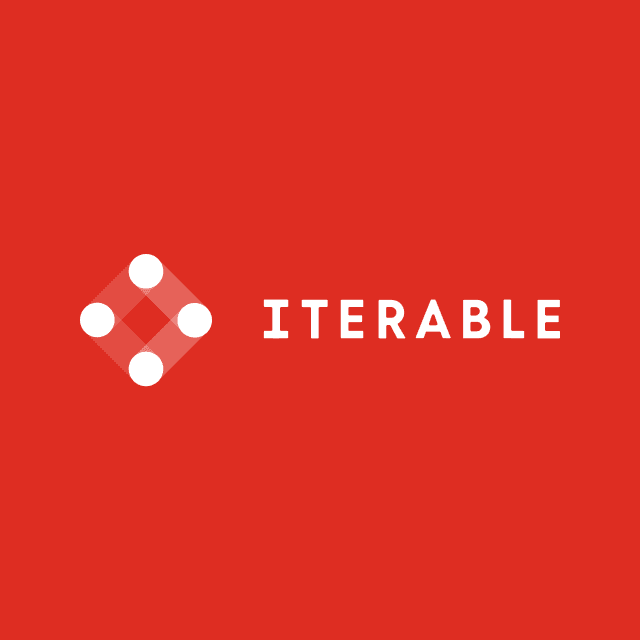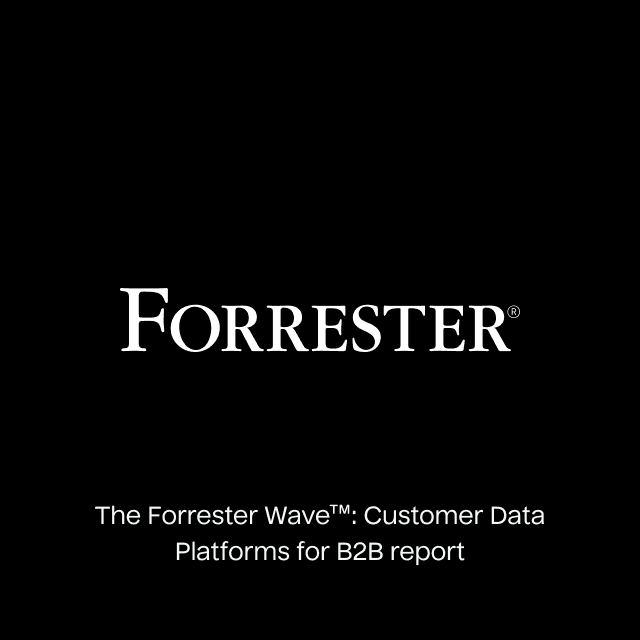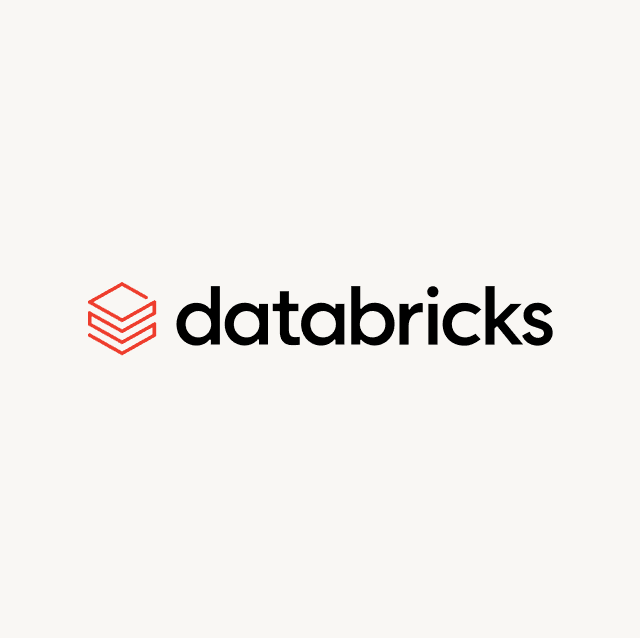Customers now have multiple channels and touchpoints with your business, and making sense of that data can get overwhelming, let alone attempting to get maximum value from it.
You can find that these interactions are placed within separate tables in a centralized data warehouse, often just for analytics. But more can be done with that data than just analysis.
You can leverage this data to create a truly personalized customer experience. However, to do so, you need to understand every part of the customer’s journey. That’s why businesses are increasingly turning to customer 360 and building a 360-degree customer view.
In this article, you’ll learn:
- How customer 360 works
- The different components of customer 360
- How to implement customer 360
- The different use cases of customer 360
What is Customer 360?
Customer 360 is a framework that consolidates all existing customer insights from various tables and models within your data warehouse to create a single, unified, and actionable profile of each customer.
Customer 360 is the output of data onboarding. It transcends the challenges of mere data consolidation by emphasizing maturity and data readiness, allowing organizations to transform their existing, often fragmented data into usable, actionable insights.
Unlike traditional models where data lives separately, Customer 360 bridges the gap by ensuring everyone shares a single source of truth. By centralizing all of your data in one place you can analytics, data activation, and artificial intelligence. The ultimate goal of customer 360 is to eliminate fragmented and siloed data and create a single customer data hub so you can build personalized customer experiences and optimize business processes.
Why Does Customer 360 Matter?
In the intricate world of modern business, data often lives in a chaotic state, scattered across disparate systems, marketing and sales tools, and Customer Relationship Management (CRM) platforms. Much like the tangled web illustrated in the image below, the messiness of data is a reflection of the complexity and disorganization that businesses frequently contend with.
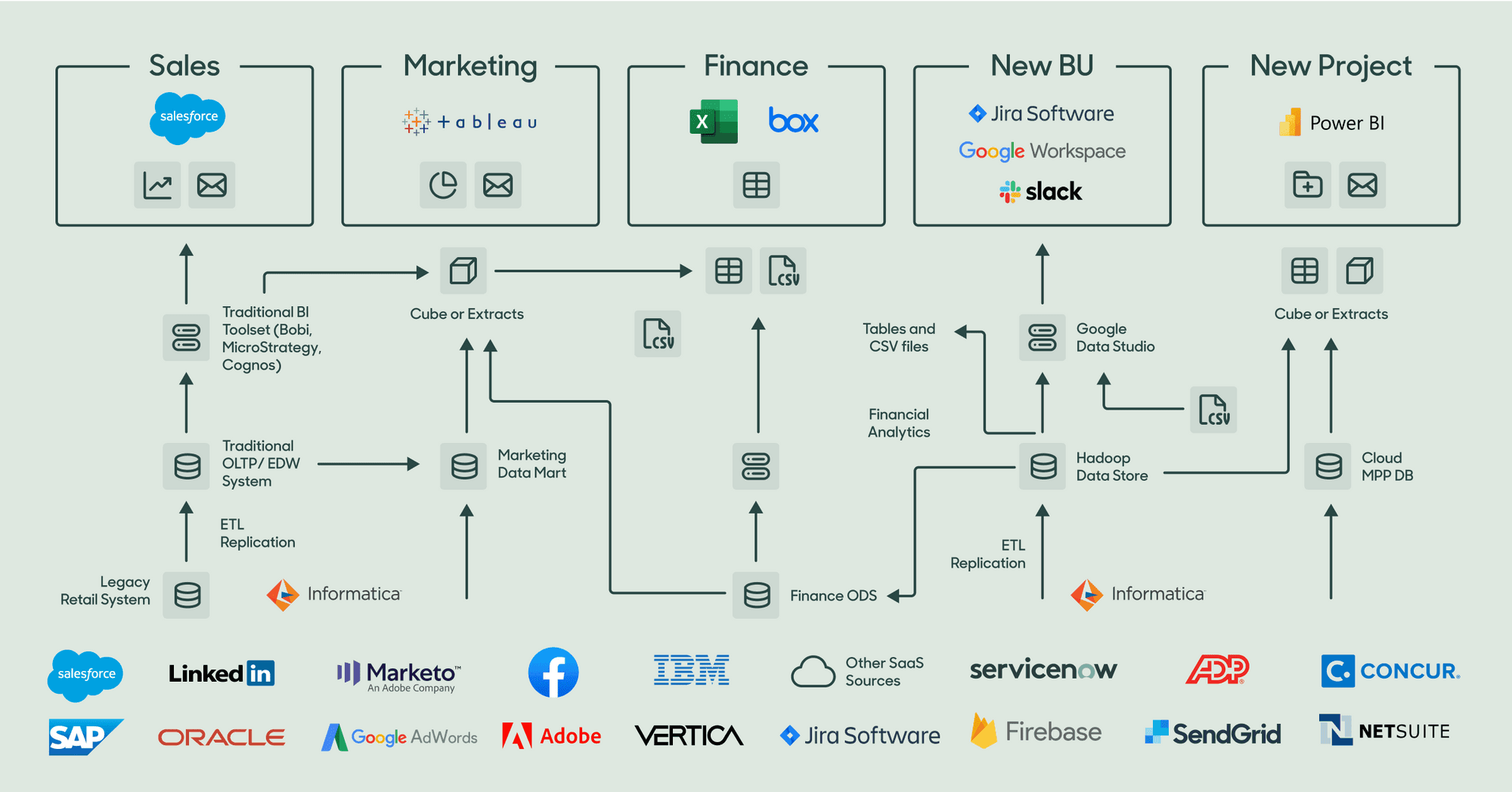
Every team within an organization often perceives the customer differently, creating a disjointed and sometimes conflicting view. Marketing may see the customer through the lens of engagement, while sales focus on transaction history, and support teams emphasize customer service interactions. Although rich in detail, this multifaceted perspective can create friction across the business, leading to inefficiencies and miscommunication.
Customer 360 is not a mere solution; it's a catalyst driving vital outcomes across various organizational roles. Marketers yearn to power personalization, data teams aim to sharpen analytics, sales teams crave relevant data access, and support teams strive to enhance SLAs and ticket prioritization. These outcomes align with the collective ambition of the organization to foster meaningful and effective customer interactions.
By stitching all the diverse data points into a single platform, customer 360 transforms the warehouse (where all your data resides, into a well-spring of insights that fuels personalization, analytics, strategy, and operational efficiency.
How Customer 360 Works
Creating a comprehensive understanding of your customer requires gathering various data and making it cohesive and actionable. Customer 360 works by turning complex and messy data into a clear and comprehensive view of your customers.
- Data Collection: Data collection in customer 360 encompasses various sources, including event collection, clickstream data, and general data from SaaS applications. The differences between these sources are crucial as they provide a multifaceted view of the customer. Whether understanding user behavior through clickstream or integrating data from various applications, the collection process is the starting point for a deeper customer understanding.
- Data Ingestion: The next step is data ingestion, where you consolidate all the information you collect into a data warehouse. It’s about combining data from diverse platforms and systems and aligning it in a structured format.
- Data Preparation: In the warehouse, the real crux of customer 360 takes shape. Data preparation involves organizing and preparing tables, aligning data, and ensuring it's in the right format to be analyzed and utilized. It's about making the data not just accessible but usable, laying the groundwork for effective analytics.
- Identity Resolution: Identity Resolution is a crucial component of customer 360 focused on linking user actions from various touchpoints into an identity graph. This graph forms a 360-degree view of each customer, encapsulating their interactions and preferences.
Customer 360 Use Cases
Within your business, you have outcomes you want to achieve and data is one step to helping you achieve it. It could be to increase conversions, reduce churn, or find friction points within onboarding. The truth is, you can leverage customer 360 for multiple use cases to drive business outcomes.
- Analytics: With all your user data in one place, you can analyze the entire customer journey, find improvement opportunities, and use it to make data-driven decisions. Analytics can help with lead scoring so the sales team can prioritize which customers will likely convert. It can also help measure marketing campaign effectiveness and where improvements may be needed.
- Advanced Audience Segmentation: Consolidating all your customer data means more data points to create segments from, which aids in targeting the right audience. You use customer 360 to create an audience of customers with a high email open rate. By using inclusive language emphasizing their high engagement, you can make these valued customers feel appreciated and offer them a special discount as an added incentive.
- Personalization : You can create better personalized experiences by easily serving relevant recommendations across multiple channels (such as email, SMS, and push) and power on-site experiences. All of which help to enhance customer satisfaction and engagement. By leveraging customer preferences extracted from their profile data, you can customize the on-site experience by featuring product recommendations that align with their interests. This approach enhances the overall customer experience and significantly improves the chances of conversions.
- Ad Optimization : Knowing more about your customers means you can create relevant ad messaging, target the right customer, and get better match rates, leading to an improved return on ad spend. You can use customer 360 to find all the customers that have already purchased and suppress them from your advertising campaigns, so you’re not wasting ad spend.
- Data Enrichment : You can send customer data to other platforms used in your organization’s departments, like sales and support, so they have a deeper knowledge of the customer to make insightful decisions. You could track the behavior of your potential customers and share it with your sales team so they can make informed outreach.
Customer 360 Tools
In the world of customer 360 tools, a clear divide exists between warehouse native and black box solutions. Warehouse Native offers a more flexible solution, as you can use your existing data infrastructure, giving you complete control over how your data can look.
On the other hand, Black Box solutions operate within their own mysterious realm. Often packaged as Customer Data Platforms (CDPs), they are the opposite of warehouse-native solutions because they are inflexible. Black box solutions own your data and restrict you on how you can manipulate it.
Customer 360 tools help businesses construct actionable profiles and execute strategies based on derived insights. The choice between the open book warehouse native solutions and the labyrinthine black box solutions represents a strategic decision with implications beyond data management.
How to Implement Customer 360
The reality is that most companies understand the value that collecting and centralizing data provides, so they have the data they need to get started. The problem is they don’t know exactly where they should start. The main blockers to getting started with customer 360 are identity resolution and data preparation.
Hightouch can help with both, enabling you create unified customer profiles without writing a single line of code. It offers Adaptive Identity Resolution so you can define logic for merging records and create an identity graph directly in your data warehouse.
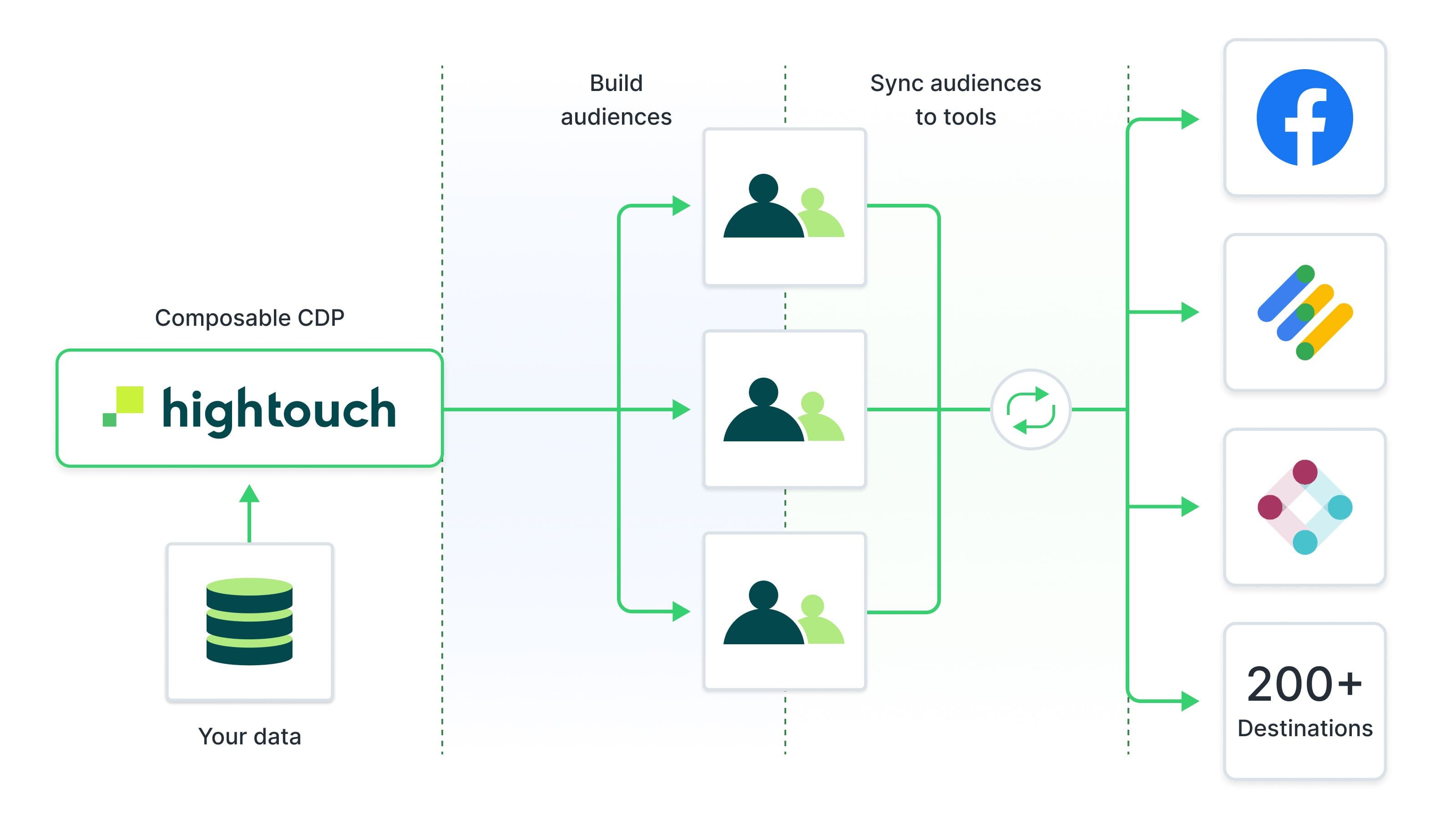
Are you interested in customer 360 and activating your data to 200+ downstream systems? Book a demo today to speak with our solutions engineers.






